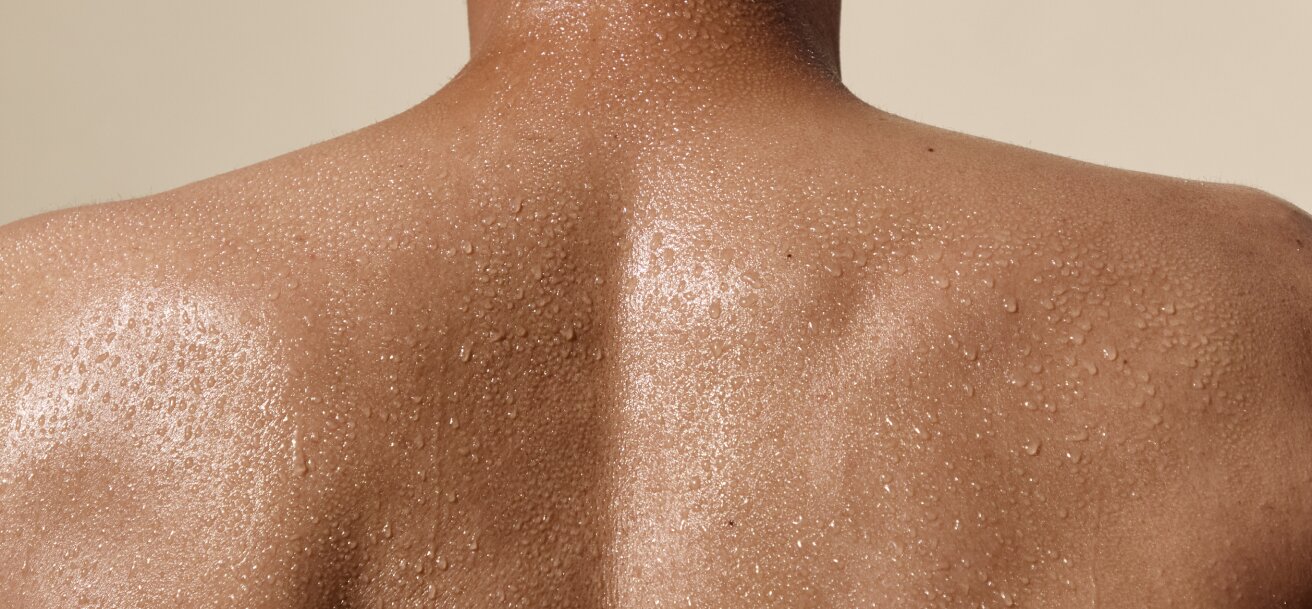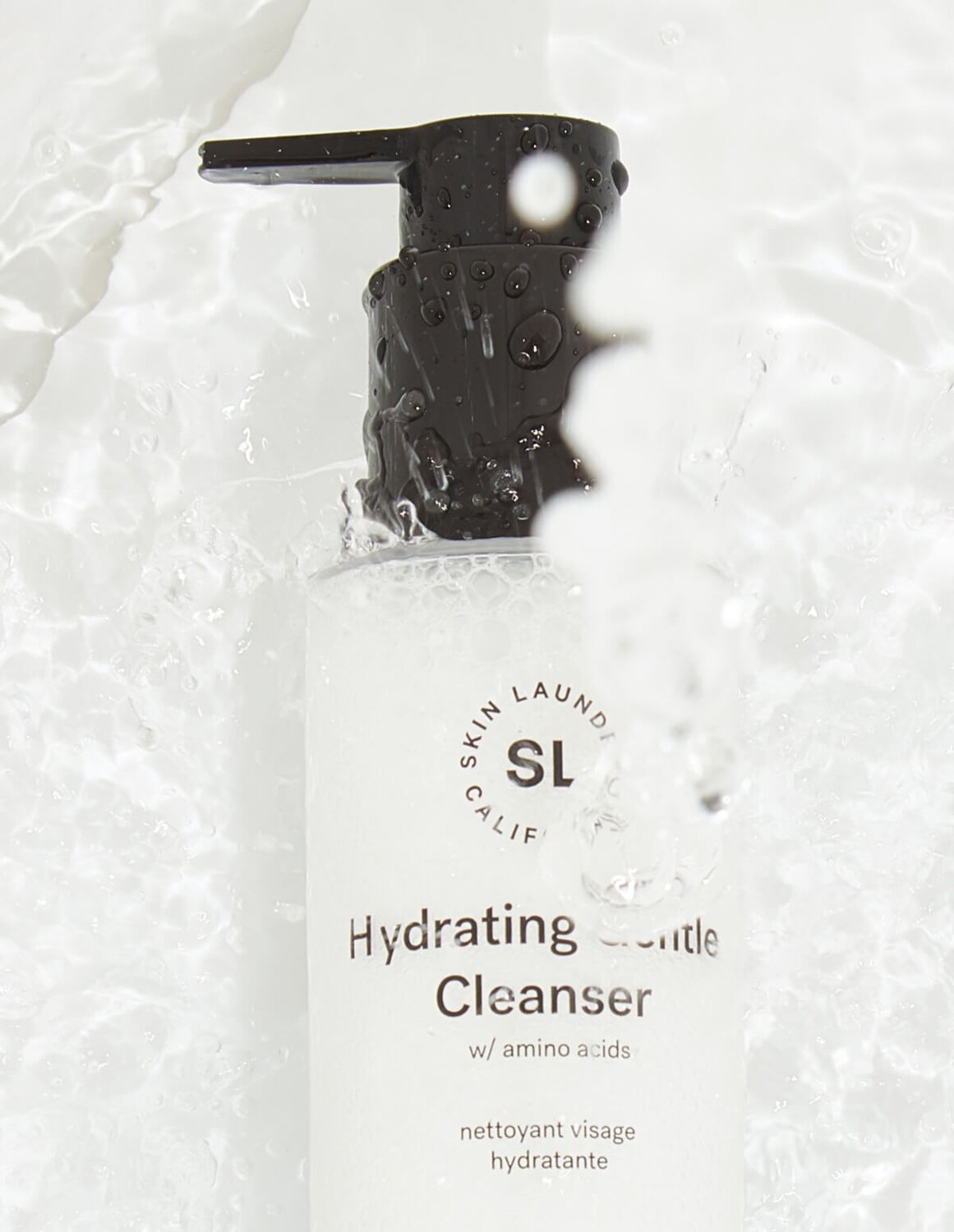
DOCTOR'S NOTE
Hydration vs. Moisture
Discover the difference and learn how to keep your skin healthy, dewy and hydrated.
When it comes to achieving healthy, glowing skin, two words you’ll often hear are “hydration” and “moisture.” While they’re often used interchangeably, they actually refer to two distinct processes that both play an essential role in maintaining your skin’s health. Knowing the difference between hydration and moisture can help you choose the right skincare products and routines to keep your skin looking its best.
Hydration is crucial for plump, dewy, radiant skin, and it’s also central to overall skin health. “In its healthiest state, skin is naturally smooth, soft and luminous. But to achieve this, it needs the right levels of moisture and hydration,” says Dr Roberta Del Campo, a board-certified dermatologist and Skin Laundry’s Chief Medical Officer. “Think of it this way: Hydrating the skin is like giving it a big drink of water to quench its thirst. Moisturizing the skin is like building a protective barrier to keep that water in. The skin needs both to avoid getting dry.
Read on to learn more about moisture versus hydration, why they’re important for skin health and what you can do to keep your skin dewy rather than dry.
How Water Supports Skin Health
The body is made of mostly water (around to 70 percent, to be exact), and there’s a reason for that. Water is a crucial medium for bodily functions that keep our overall health in check. It helps regulate the body’s temperature, delivers nutrients and oxygen to the cells, and lubricates our joints, among other things. Not to mention, water is also crucial to skin health.
Our skin cells cannot properly function without adequate moisture and hydration. Water helps skin cells maintain their structure, and it also helps them carry out processes vital to the skin’s elasticity and overall health, including skin-cell turnover, skin-cell repair and collagen and elastin production. When the skin is not properly hydrated, it becomes dry and itchy, can appear uneven or dull in tone, and fine lines become more noticeable.
Our skin cells cannot properly function without adequate moisture and hydration.
The Effects of Dehydrated Skin
The effects of dry, dehydrated skin show up clearly on the face and body. Dry skin is more prone to wrinkles, fine lines and creasing as a lack of hydration causes cells to shrivel up and the skin to lose elasticity. A lack of hydration can also cause dead skin cells to build up on the surface of the skin, which prevents light from reflecting off the skin’s surface evenly and causes a dull, lackluster look. Our skin cells cannot properly function without adequate moisture and hydration.
Dehydration can also lead to breakouts and acne, as while these can result from an excess of oil, they are also caused by a lack of moisture as when the skin is dehydrated, it produces more sebum to counteract the dryness. This can cause a pore-clogging buildup of oil, which in turn causes breakouts.

How the Skin Barrier Keeps Skin Hydrated
The best way to prevent dryness is to keep the skin barrier strong. Responsible for regulating moisture levels within the skin, the skin barrier has a three-part ecosystem in which various layers produce the hyaluronic acid, sebum and other natural substances the skin needs to stay balanced.
- The Microbiome: The microbiome is the ecosystem of “good” bacteria that live on the skin’s surface. This beneficial bacterium protects the skin from water loss, and it also helps the skin produce ceramides (which support the skin barrier) and sebum (which increases hydration levels.)
- The Acid Mantle: Composed of lipids and sweat, the acid mantle is a thin, slightly acidic film on the surface of the skin. The acid mantle serves as a barrier that keeps moisture in. At the same time, it protects the skin from external aggressors such as harmful chemicals and pollutants.
- The Lipid Layer: A combination of lipids, ceramides and fatty acids, the lipid layer has been compared to the mortar in a brick wall. By filling the space between the skin cells, this layer helps the skin barrier maintain its structure and effectively perform its skin-protecting functions, which include moisture retention.
Together, these layers work to keep the skin protected, hydrated, and healthy.
Read more about the skin barrier here.
Moisture Versus Hydration
“Moisture” and “hydration” have similar meanings—but they’re not the same. “Hydration refers to the actual water content of your skin cells; moisture, on the other hand, refers to the skin’s ability to keep that water in,” says Del Campo. “If your skin is dehydrated, it means that your skin cells need more water, in which case I’d recommend adding hyaluronic acid to your topical regime since it attracts water molecules to the skin. If your skin is dry, rather than dehydrated, this indicates that it’s not keeping moisture in as well as it could and would benefit from moisturizing ingredients—such as vitamin B5 or shea butter—that will form a protective barrier on the skin.”
Hydration refers to the actual water content of your skin cells; moisture, on the other hand, refers to the skin’s ability to keep that water in.
Hydration refers to the actual water content of your skin cells; moisture, on the other hand, refers to the skin’s ability to keep that water in.
How to Layer Skincare
A sound topical regime can hydrate the skin and help it retain moisture, but it’s essential to apply skincare products in the proper order. In general, dermatologists recommend layering skincare by applying the thinnest products first and the thickest products last, so that all products can be properly absorbed.
Humectants that draw in moisture should be layered under occlusives and emollients that keep that hydration locked into the skin. Ingredients also need to be considered when layering your skincare products. Humectants that draw in moisture should be layered under occlusives and emollients that keep that hydration locked into the skin.
Humectants that draw in moisture should be layered under occlusives and emollients that keep that hydration locked into the skin.

Humectants, Occlusives and Emollients
When it comes to moisturizing, it is important to understand the difference between humectants, occlusives and emollients.
Humectants: A humectant draws water to the skin and holds it in place, like a sponge. The most notable humectant is hyaluronic acid which can hold 1,000 times its weight in water. Bear in mind that you must use humectants on damp skin so that they draw water into—and not out of—the skin. Another notable humectant is glycerin.
Skin Laundry’s Hydrating Gentle Cleanser contains sodium PCA, which is a humectant similar to hyaluronic acid. By holding up to 250 times its weight in water, it plumps and hydrates the skin.
Skin Laundry’s Hyaluronic Acid Serum is formulated with its namesake humectant, as well as niacinamide, peptides and grapeseed oil, drawing hydration into the skin and then locking it in.
Skin Laundry’s Hydrating Facial Sheet Masks help to restore the skin barrier with ingredients such as the hyaluronic acid derivative sodium hyaluronate and aloe vera, another humectant.
Occlusives and emollients are both moisturizing ingredients that help the skin keep moisture locked in, but they have different functions.
Emollients, such as plant and mineral oils, shea and cocoa butter, petrolatum and fatty acids, are moisturizing agents that soften dry skin by sealing in moisture and reducing evaporation. Some emollients, like cocoa and shea butters, also have occlusive properties.
Shea butter is a key ingredient in Skin Laundry’s Vitamin B5 Antioxidant Moisturizer alongside hyaluronic acid and camellia japonica flower extract.
Skin Laundry’s Sun Mineral Defense Mineral SPF 30 contains hemisqualane, which is a lightweight, biomimetic emollient that moisturizes the skin while also enhancing the spreadability of the formula for better UV protection.
Occlusives are moisturizers that act like a top coat. They lock in moisture in place, helping to prevent transepidermal water loss (or TEWL), which happens when moisture evaporates from the skin. Heavier than emollients, occlusives also support the skin barrier and are particularly beneficial for dry skin. Occlusives are mainly butters, waxes, and petrolatum ingredients.
More Skin Hydration Tips
Outside of a consistent skincare routine, certain lifestyle factors can support the skin’s hydration. Drinking water, for example, keeps the skin cells hydrated, which in turn creates a more supple, luminous complexion. To stay adequately hydrated, most doctors recommend drinking 2.7 (or 91 fluid ounces) to 3.7 liters (125 fluid ounces) of water each day.
Certain foods can also boost the skin’s hydration. For example, salmon, eggs and nuts are rich in omega-3 fatty acids that can regulate the skin’s oil production. Nuts and seeds are also rich in vitamin E, which additionally supports the skin’s lipid layer and ensures better skin hydration.
Read more about eating for healthy skin here.
Getting proper rest can help the skin maintain its moisture levels too, as the body releases vasopressin (a hormone that helps regulate water levels) during sleep.
Doctor's Note
In a skincare routine, products should be layered from thinnest to thickest so that each product can fully absorb. Humectants go on first, followed by occlusives and emollients which must be applied last.
Additional Reading
Your Shopping Bag
Your shopping bag is empty











